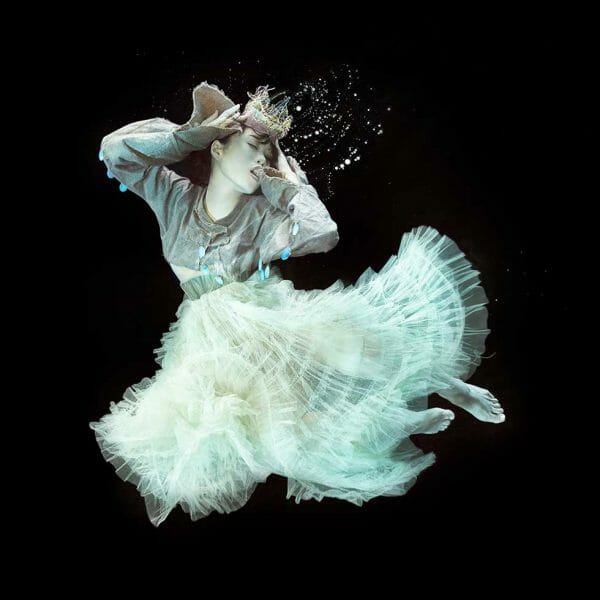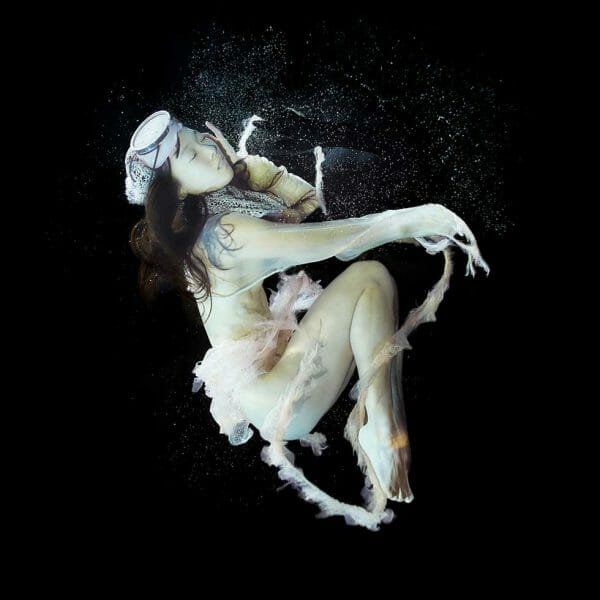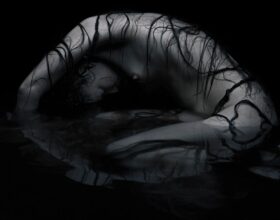Frills and lace float, weightless, amongst graceful porcelain limbs in an eerie, hazy glow. There’s a nostalgic ambiance created by this otherworldly place found beneath the surface of water. This place, often swimming pools and tanks but sometimes in open water, is where UK photographer Zena Holloway conducts photo shoots. Since the age of eighteen, Zena has been photographing solely under the waves. She and her models dive down to the underwater sets and lighting areas.
Obviously being such a big part of her life, the oceans are of great importance to Zena. Her images often softly suggest her fear of losing such an important resource and subtly prompt viewers to take action. Zena Holloway’s latest photography series, Flowers For Jeju: The Last Mermaids, has a theme that runs perfectly with this idea.
“We go to the Otherworld to earn money, and return to the earthly world to save our kids.” ∼ Haenyeo proverb
For hundreds of years, the women -called haenyeo- of South Korean island Jeju; have passed down the tradition of being real-life mermaids in order to provide for their families. The haenyeo, or sea women, free dive into the depths of the ocean in order to collect food and materials. But in more recent years, as the oceans become warmer and the haenyeo decline in number, it seems that this culture so closely tied to the waves has the same potential fate as the ocean itself. Zena’s photographs presenting this beautiful heritage speak very much to this. Images of figures suspended in water depict this idea of vanishing tradition and vanishing ocean ecology.
Continue reading below for a behind-the-scenes video and more details about Flowers For Jeju: The Last Mermaids from our interview with Zena Holloway!
Flowers for Jeju : The Last Mermaids from Zena Holloway on Vimeo
Follow Zena via her Instagram account
Where did your curiosity about the South Korean sea women begin, and what went into learning the history and preparing to shoot?
I first heard about the haenyeo in 2015 during a PR visit to Seoul. From the moment, I learned about these diving women of South Korea I was enchanted with their story. The idea that a relatively isolated community of women have survived for a thousand years by collecting and harvesting what they find in the ocean was fascinating to me. I travelled to the island of Jeju and spent a couple of weeks in their community, listening to them recount their personal stories as well as some of the hardships they have endured. I photographed them working in the water, witnessing the incredible skill and endurance they have for diving.
The haenyeo museum on the island taught me more about their turbulent history as well as their cultural heritage. I discovered a thesis by Bond & Sufflield published in 2012 suggesting that historical sightings of mermaids were, in fact, sightings of actual diving women, especially those around South Asia. They suggest that many mermaid myths are based on women with legs, not fish tails and that there’s a very real possibility that the haenyeo were the original mermaids that early English sailors described in their accounts when they returned home from their long voyages. With this, the story of the haenyeo becomes tangled in the stuff of legend and myth. The narrative was so rich I knew I had to create a visual story about them.


How do you think that delving into this subject has changed your relationship with water and/or photography, if it has at all?
In today’s busy and populated world, there’s an honesty to living a self-sufficient life of growing and gathering your own food. I’m drawn to the knowledge the haenyeo have learned about the oceans and how to live a sustainable and green life. They’ve found a purpose to spending their days in the water which of course comes with its own peril and hardships but there is also a romantic freedom involved that is hard to ignore.
Water is ancient and it’s no coincidence that all civilizations throughout history have been built on or near water. Sometimes being underwater momentarily provides that space to metaphorically ‘breathe’ and get away from it all. It’s a space where we can’t talk, where sound is distorted and often sight is compromised but if you look deep it’s a calm and peaceful space, where we can relax and explore; capturing that feeling continues to be the challenge in my work.
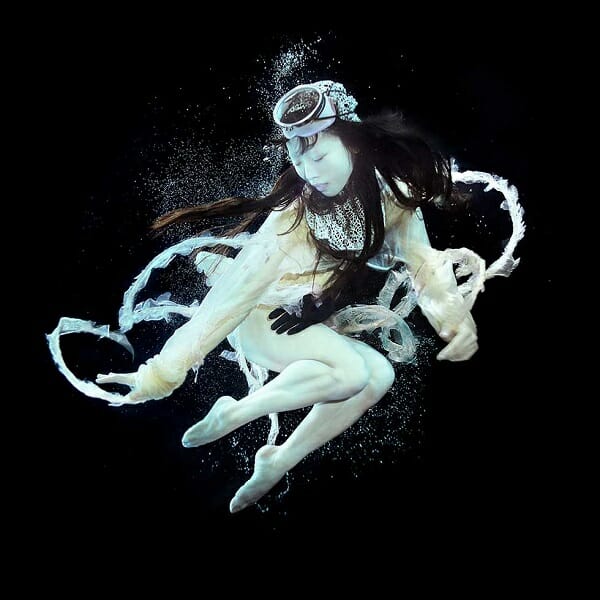
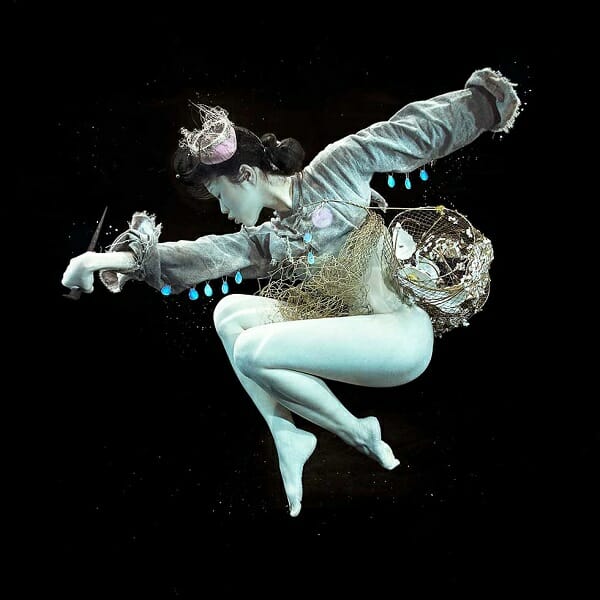
What are some compositional elements in this photo series that you feel are most important to the overall message?
I had a sense that I should try hard to use ethically sourced, second-hand or vintage products for this project. I like the notion that the materials have a history, and that they’re not just bought to be used once for a shoot and then discarded. Working within these boundaries forced me to be more creative with the materials that I had at my disposal. I did, however, reach a laughable stumbling block with sourcing the right kind of masks. The haenyeo wear small round, low-density masks that were proving impossible to get in Europe. It wasn’t until I finally managed to get a few sent to me from Korea that I realised why. Of course! The haenyeo have completely different-shaped faces from Europeans and their masks don’t fit over our larger noses! In fact, I was very lucky in the end to get a real vintage haenyeo mask marked with ‘정자’, which is the name of the haenyeo who once owned it and it’s visible in one of the final Seawomen images.
There are various metaphors that run through the series. One example is Sumbi, which is the breath of life that the haenyeo take when they dive but there is another word that is taboo among the haenyeo. This is mulsum or ‘water breath’. If they are tempted to stay underwater too long to gather the riches, the ocean will become their grave, but if they can master their desire, the ocean will bring them a bounteous life. The first thing the haenyeo teach their daughters is the discipline to resist ‘water-breath’. I tried to show the mulsum with a black figure that blends into the background. In some of the images, this figure is more visible than others, but where possible I have kept hints of this menacing shape.
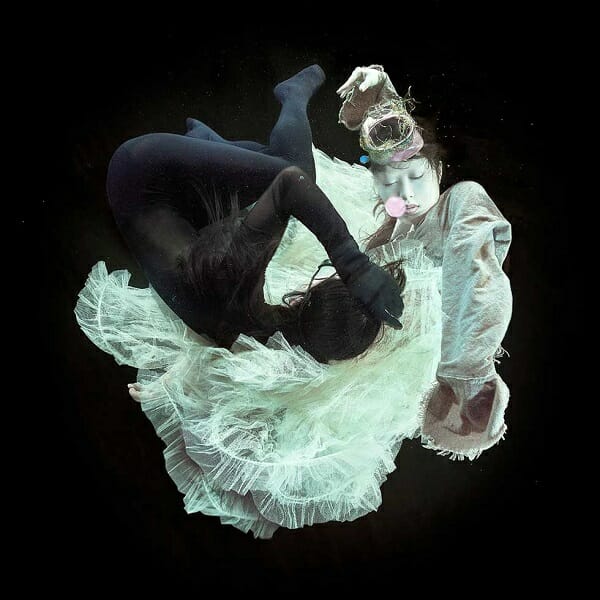
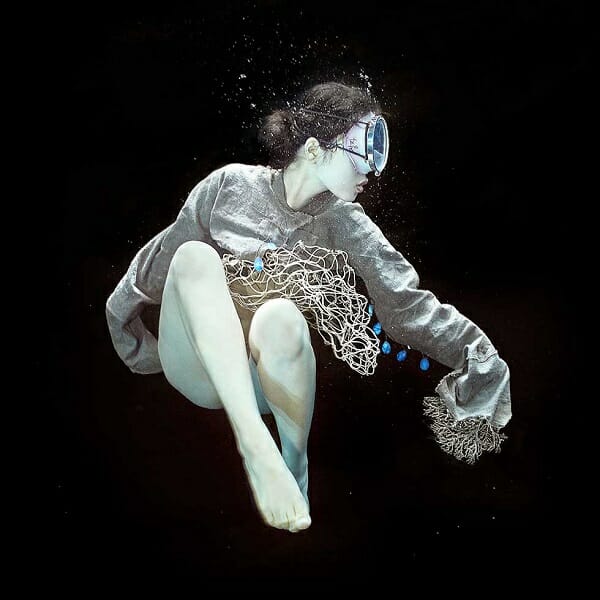
How did you want to capture your sea women that may have been different from how you’ve captured in previous shoots?
From the start, it was important to me that the final images were captivating and beautiful. I find my work is able to reach further when the subject is enticing and easy to look at. Underwater, people are vessels for telling stories. In this case, the story is about the ideology of the haenyeo and what they represent. We live in a time of rapid ecological, industrial, and technological change that is
threatening their way of life. Their fate seems entwined with the quality of the oceans they harvest.
Increasingly, the aim of my work is to disarm the viewer with seemingly wistful and beguiling imagery, but behind the beauty of the image I’m trying to invite questions about the deteriorating quality of our oceans. In the end, they are only images of women in water, but using the power of photography perhaps, I’m able to help deliver a subtle message. Finding a way to get people quietly active about protecting our oceans is my aim and something that we can all contribute to. I’d like my kids to grow up and still have a planet with oceans and marine life that they can discover and enjoy.
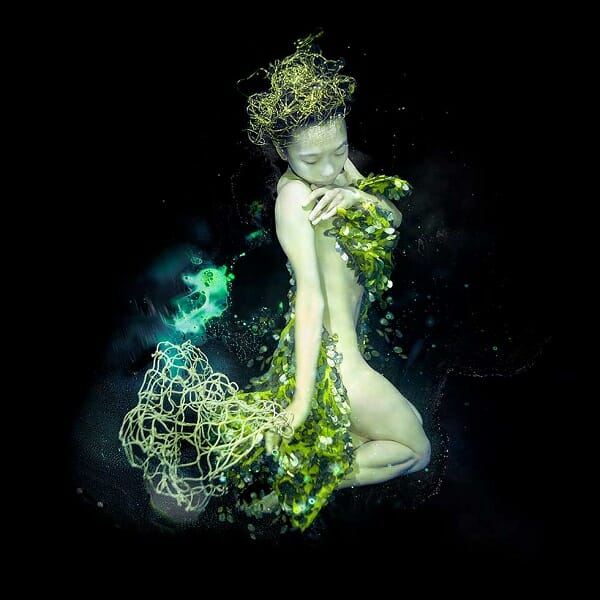
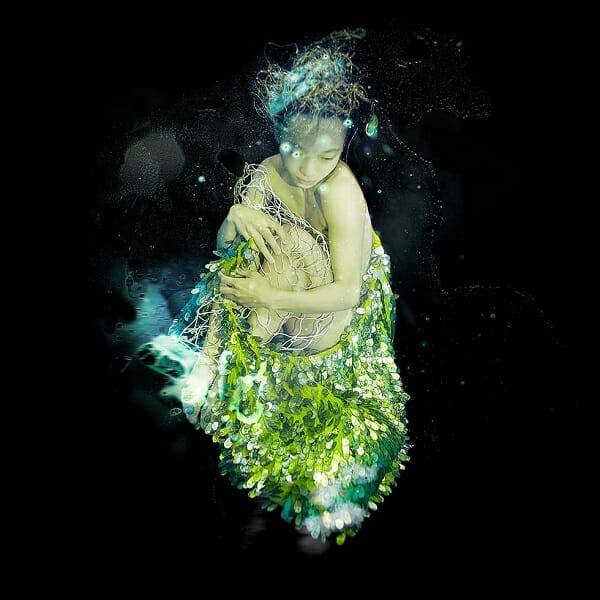
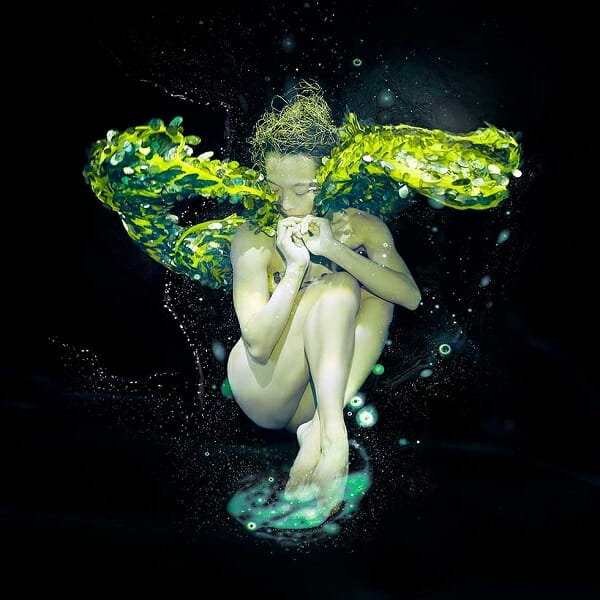
I’d be interested in how you set up lighting, as I can imagine that the water makes light dispersal harder to control. Could you describe that process for us?
It might sound a little dramatic, but I like to think of the water as a being in itself, moving and changing to suit its mood. Water is constantly changing and different water affects the way the light behaves too. Wasn’t it Heraclitus who said “No man ever steps in the same river twice…”? With poor visibility, it covers the images in a fog and the light bounces around and fades quickly. When the water is clear, the light works closer to the way it does on land and is easier to predict. Light that travels through the surface magnifies and disperses to create those rippled effects we associate with the bottom of swimming pools. I see the light underwater as a moving target; its not easy to predict, but the upside is that there are moments when chance takes over and the camera captures the light doing extraordinary things.
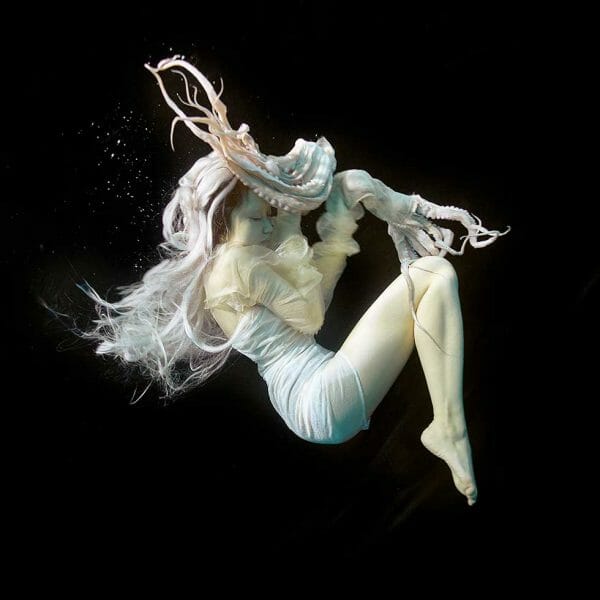
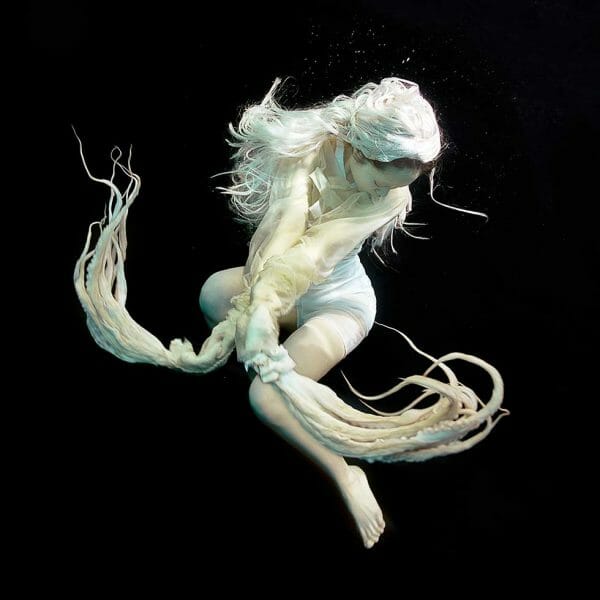
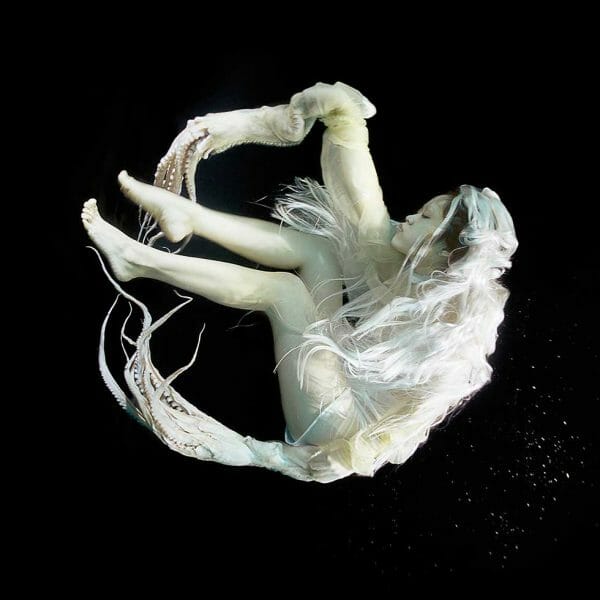
Having been in water most of your life, tell us how you’ve witnessed the impact of climate change over the years.
I’ve noticed a decline in the quality of the oceans I’ve visited over the years. You can’t dive anywhere now without seeing some evidence of human debris around you. When I’m not loaded down with too many cameras I try to do my bit and bring back what rubbish I can to put it in the bin. Obviously, climate change is a massively complicated problem but in the last year, it really feels like there is a glimmer of hope. More people are speaking up and petitioning governments to make changes. Perhaps social media is the key to building support for environmental changes. Either way it’s well overdue. To quote Dr. Sylvia Earle:
“The next five years may be the most important in the next ten thousand for our planet. There are plenty of reasons for hope, yet every day, doors of opportunity close. We know what to do. Now is the time to act.”
